
The most famous representatives of French classicism in painting
French Classicism emerged in the 17th century, dominated for a century, briefly gave way to the frivolous Rococo, and then reigned again until the early 19th century. The most famous French classicist painters laid the foundations of this movement and created great works of art that now adorn the world's best museums. They were emulated by both their compatriots and artists from other countries, including Russian painters. Let's remember the most significant representatives of French Classicism and their best paintings!
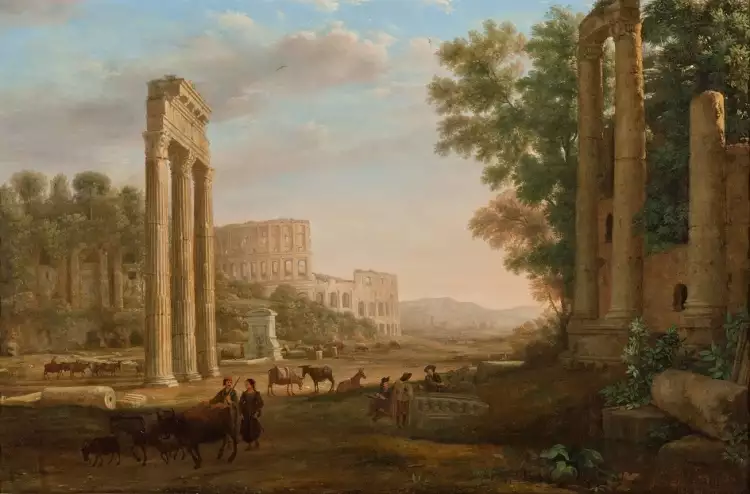 French classicism. Claude Lorrain. Capriccio with the ruins of the Roman Forum, 1634
French classicism. Claude Lorrain. Capriccio with the ruins of the Roman Forum, 1634
The Most Famous French Classicist Painters
French classicist painters are represented in the collections of the world's finest museums. Typically, these artists depicted historical scenes and drew inspiration from the masterpieces of antiquity or the Renaissance. Some representatives of the movement turned to everyday life, landscapes, or still life, but even these works were imbued with the main ideas of the era. Classicists believed in the harmonious order of the world, the righteousness of the law, and the triumph of human reason.
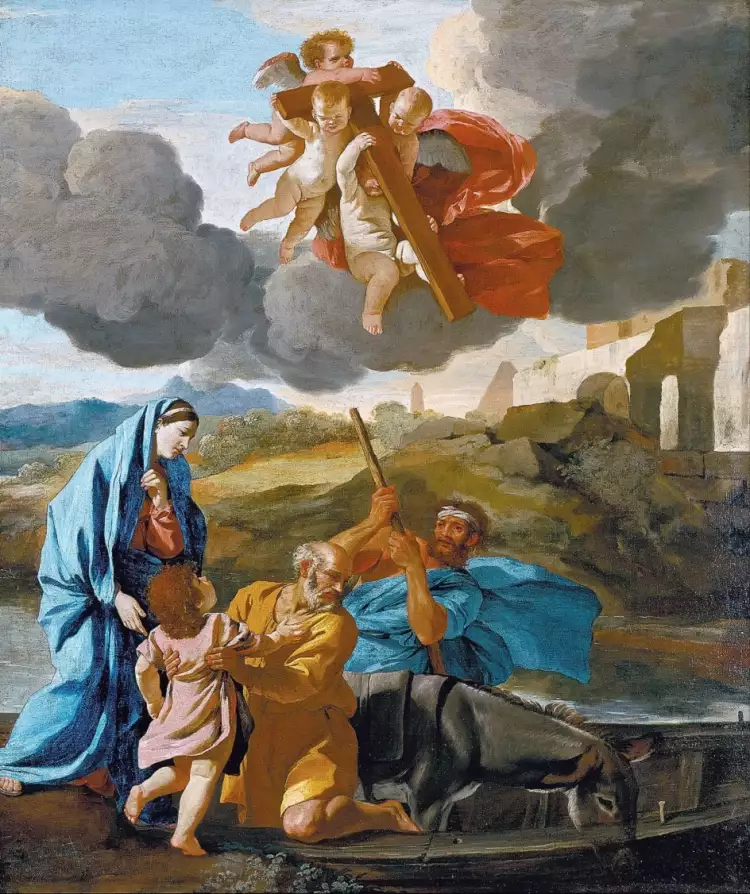 French classicism. Nicolas Poussin. The return of the Holy Family from Egypt, 1638
French classicism. Nicolas Poussin. The return of the Holy Family from Egypt, 1638
Nicolas Poussin: The Brightest Representative of Early Classicism
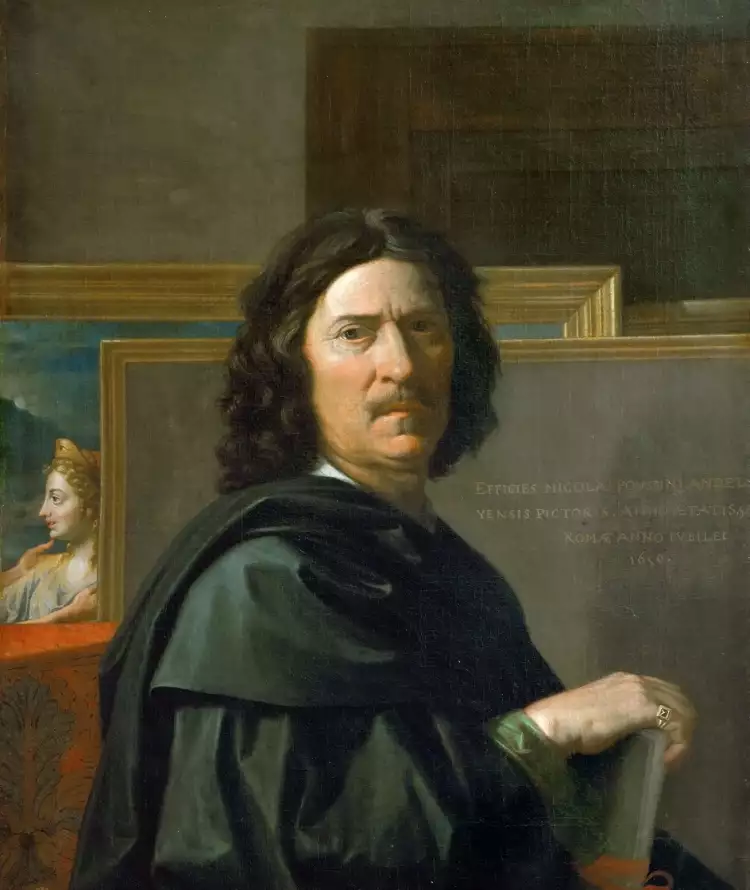 French classicism. Nicolas Poussin. Self-portrait, 1650
French classicism. Nicolas Poussin. Self-portrait, 1650
French Classicism owes much to Nicolas Poussin; the first half of the 17th century is even called the Poussin era. He spent much of his life in Italy, was well-versed in the art of antiquity and Renaissance masterpieces. He was heavily influenced by the innovative ideas of the Carracci brothers (Annibale Carracci and Agostino Carracci), who took ancient canons as a model in the training of young artists. He painted pictures on mythological and religious subjects, depicting heroes living in harmony with nature. In his later works, majestic landscapes predominated.
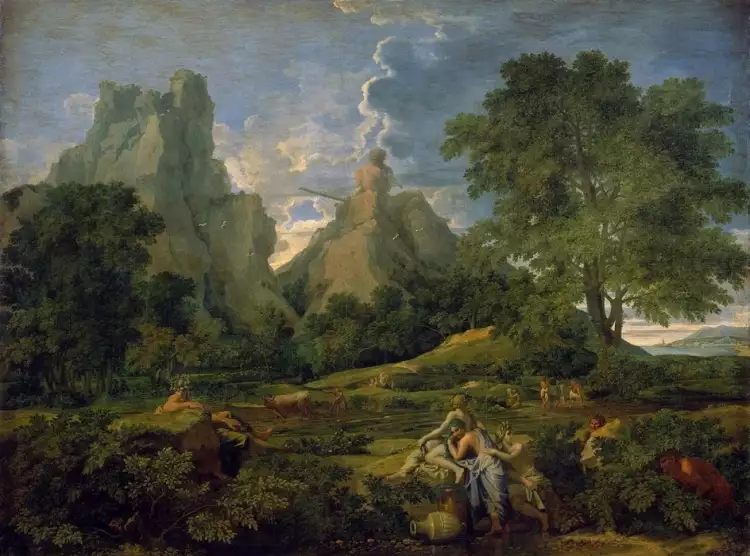 French classicism. Nicolas Poussin. Landscape with Polyphemus, 1649
French classicism. Nicolas Poussin. Landscape with Polyphemus, 1649
Claude Lorrain: Master of Classical Landscape
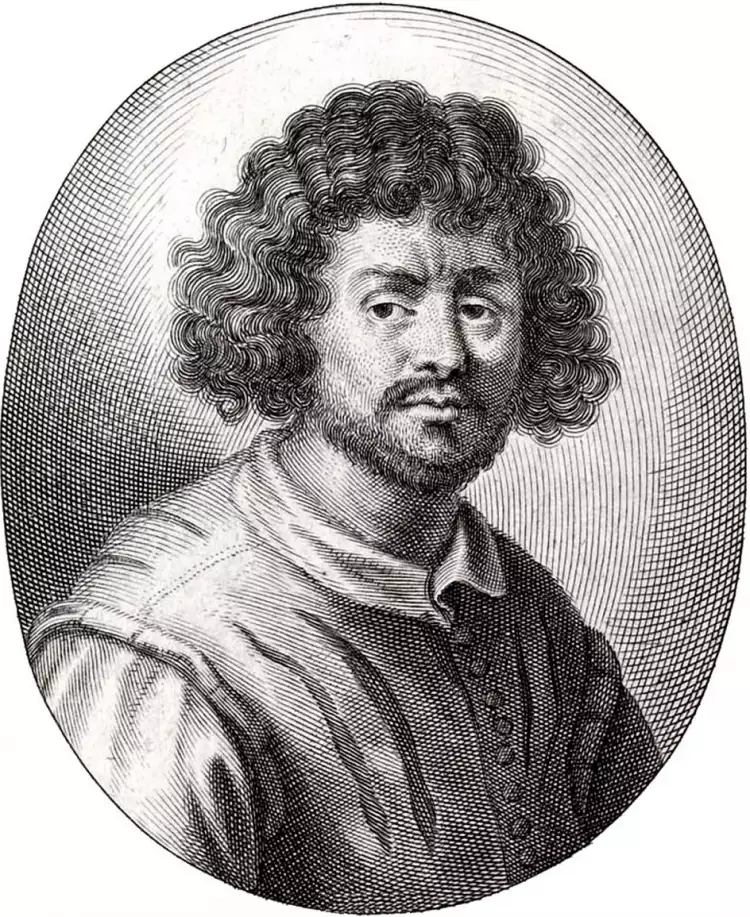 French classicism. Claude Lorrain. Self-portrait, 1650
French classicism. Claude Lorrain. Self-portrait, 1650
Although classicists considered landscapes a minor genre, for Claude Lorrain, it became the central theme of his work. The painter created idyllic paintings in which the main characters were the sun, the sky, seaports, and rocky shores. Ruins of ancient buildings often appear, reminding of the transience of human life and the eternity of nature. In the 19th century, these ideas were adopted by German Romantic painters. Like Poussin, Lorrain spent most of his life in Italy but was well-known in his homeland. For the next two centuries, his works inspired both French and Italian landscape painters.
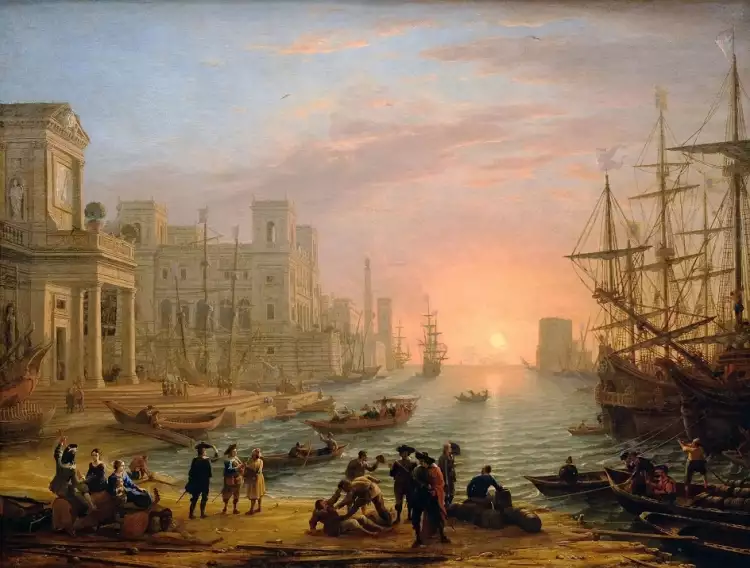 French classicism. Claude Lorrain. Seaport at sunset, 1639
French classicism. Claude Lorrain. Seaport at sunset, 1639
Louis Le Nain: Pioneer of the Peasant Theme in Painting
Artist Louis Le Nain came from an affluent but humble farming family. He had a deep understanding of the everyday life of peasants and depicted it in his paintings. This theme was far from the lofty ideals of antiquity, but the master portrayed common people within the framework of classicism traditions. This was evident in the following:
- The author paid great attention to composition, clearly defining forms, light, shadows, and drapery.
- Often, the figures were arranged in a row, as in ancient Roman reliefs, and a low horizon made them more significant.
- Le Nain's heroes, though modest, were full of inner dignity and nobility, which connected them with historical genre characters.
- Emphasis was placed on the moral foundation of peasant life, their naturalness, and closeness to nature.
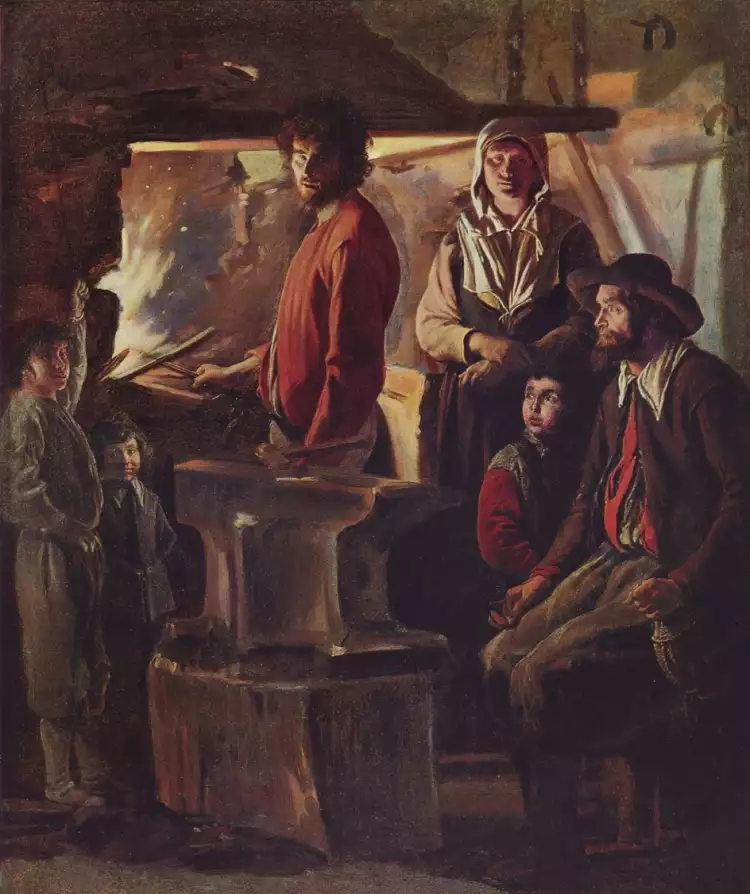 French classicism. Louis Le Nain. The Forge
French classicism. Louis Le Nain. The Forge
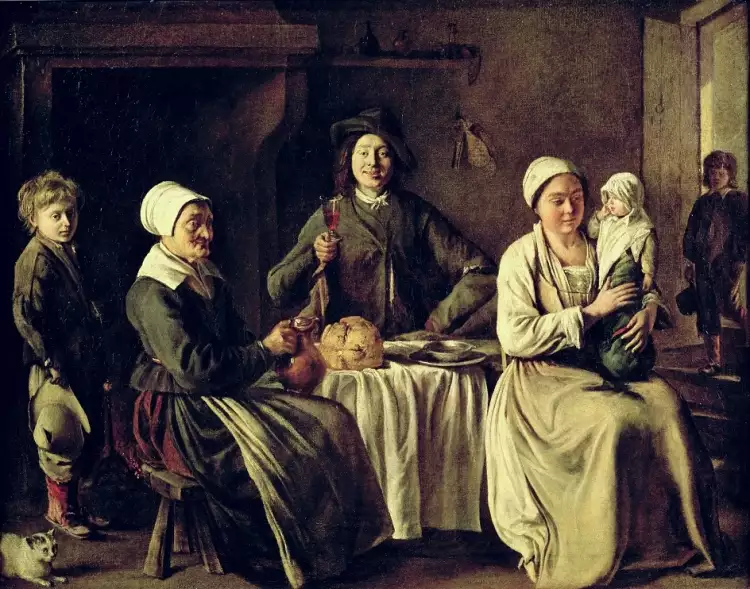 French classicism. Louis Le Nain. The Happy Family or The Return of Baptism, 1642
French classicism. Louis Le Nain. The Happy Family or The Return of Baptism, 1642
Jean-Baptiste Chardin: A Poetic Approach to Genre painting
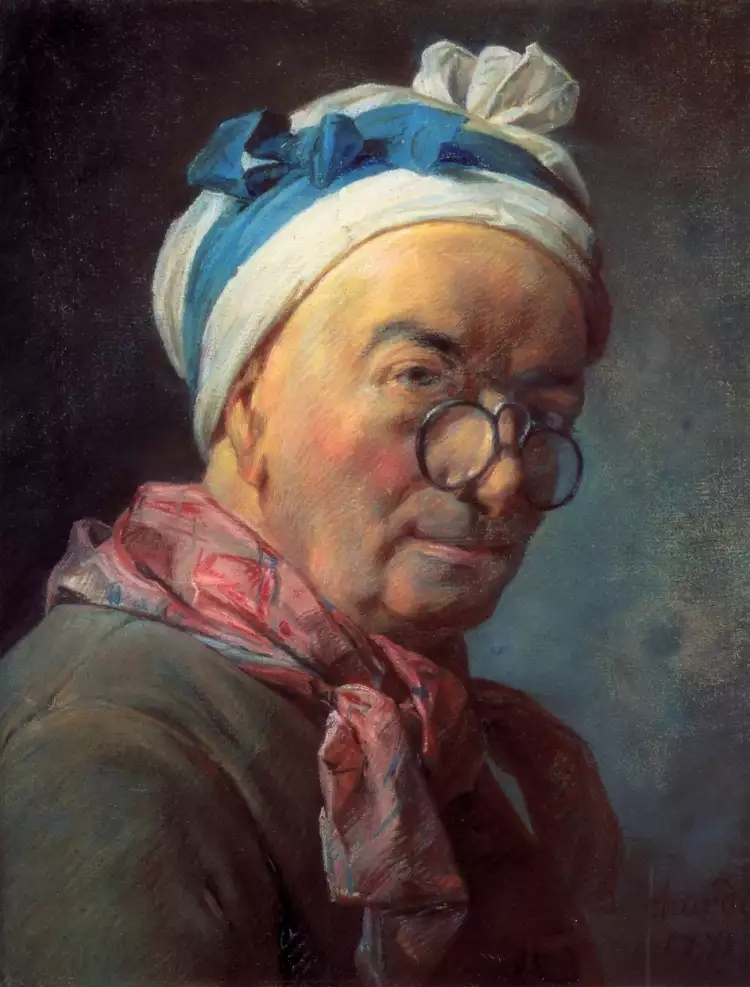 French classicism. Jean Baptiste Chardin. Self-portrait, 1775
French classicism. Jean Baptiste Chardin. Self-portrait, 1775
Jean-Baptiste Chardin regarded works by Dutch masters as models rather than Renaissance masterpieces. Instead of grand moments from myths or history, he preferred to paint still lifes and everyday scenes with representatives of the third estate. His approach is close to that of Le Nain and quite different from the realists of the 19th century who tackled the same subject. In Chardin's works, peasant life appears tranquil and soulful. He seems to invite us to take example from his characters who appreciate simple joys and the warmth of family ties. Among his other merits, the painter is renowned as a master colorist.
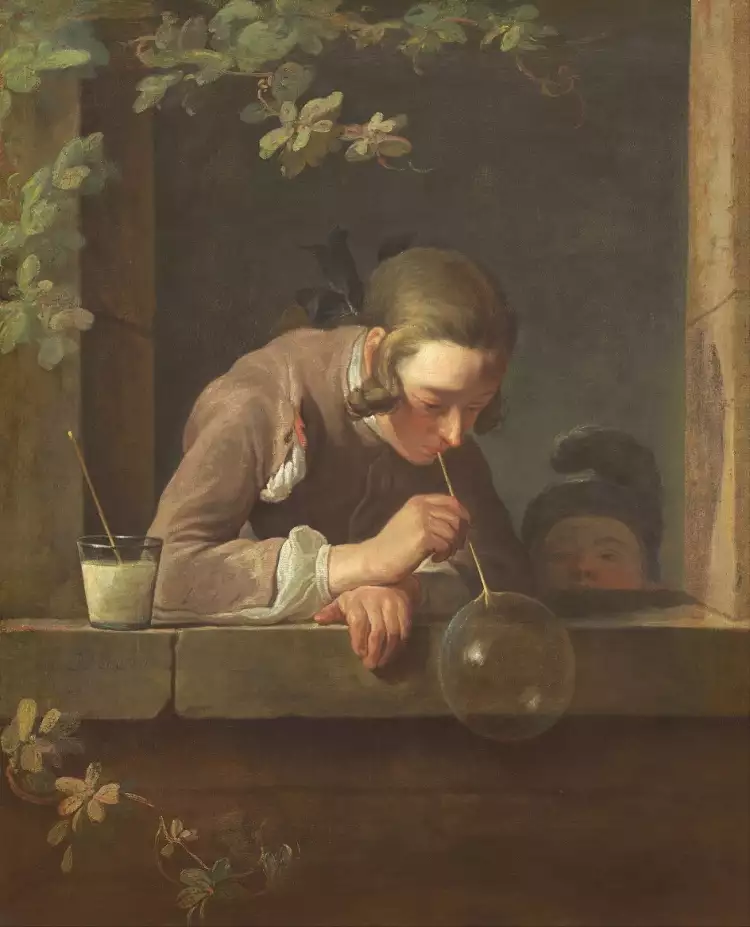 French classicism. Jean Baptiste Chardin. Soap Bubbles, 1734
French classicism. Jean Baptiste Chardin. Soap Bubbles, 1734
Jacques-Louis David: The Bard of the French Revolution
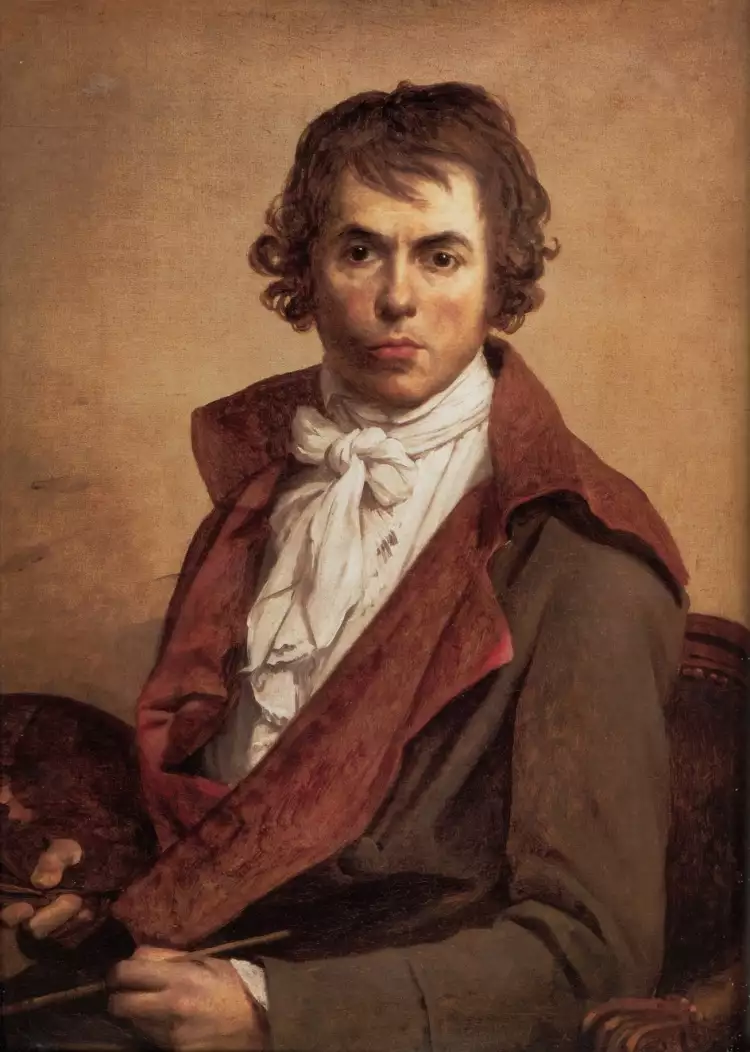 French classicism. Jacques-Louis David. Self-portrait, 1794
French classicism. Jacques-Louis David. Self-portrait, 1794
Jacques-Louis David is a prominent representative of neoclassicism, creating his best works at the turn of the 18th and 19th centuries. The master warmly welcomed the revolution and its main figures. He actively participated in the country's political life and sought to immortalize the historical events happening before his eyes through painting. One of his most recognizable paintings is "The Death of Marat." David admired Napoleon Bonaparte and painted the famous portrait of the emperor.
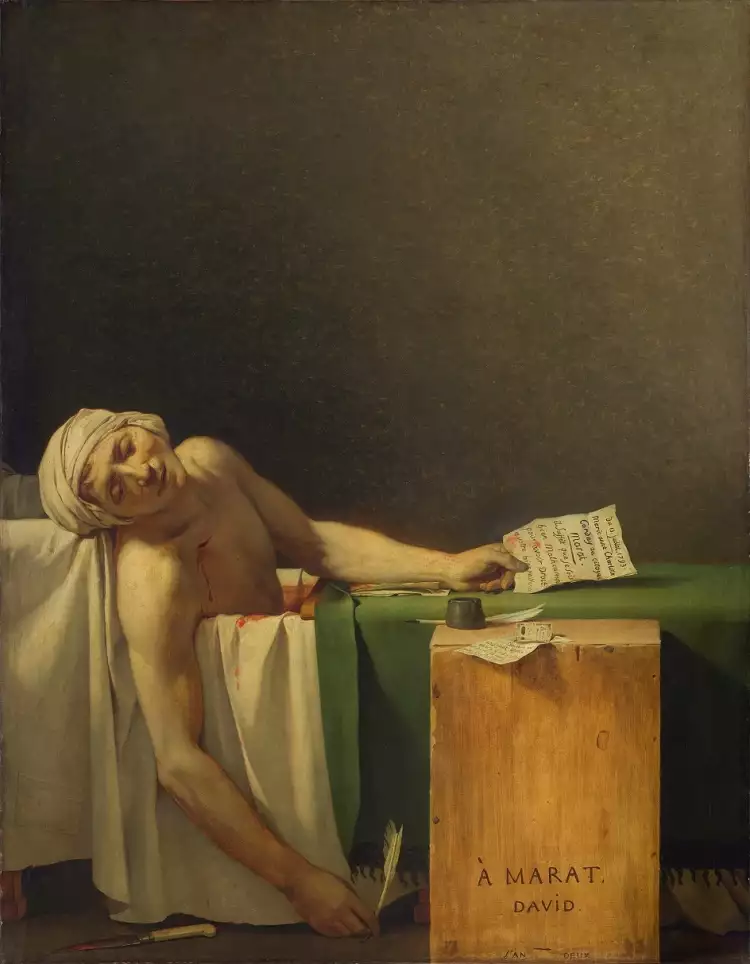 French classicism. Jacques-Louis David. The Death of Marat, 1793
French classicism. Jacques-Louis David. The Death of Marat, 1793
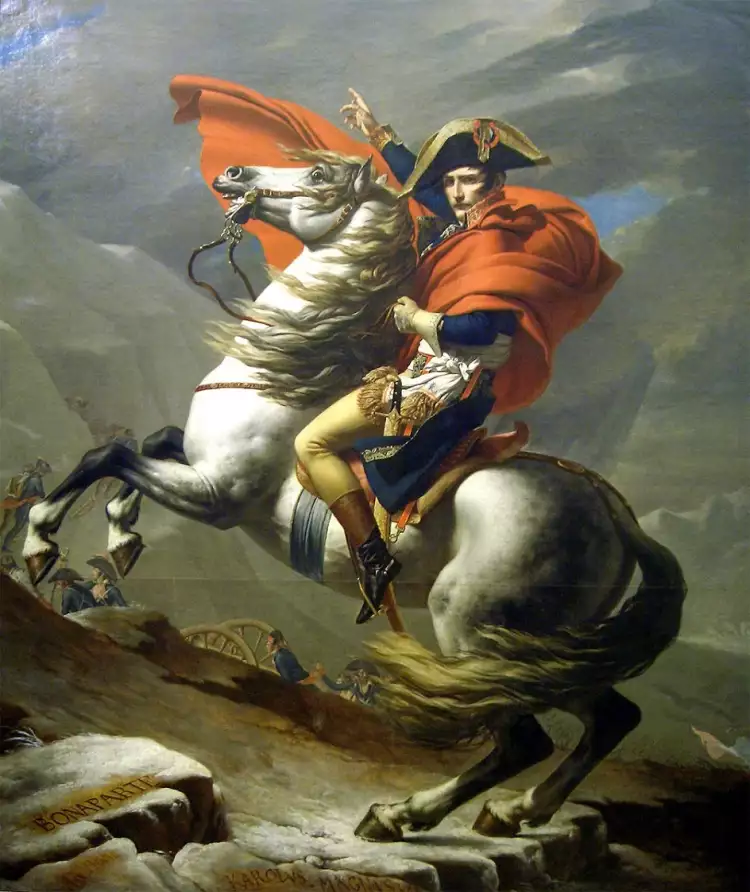 French classicism. Jacques-Louis David. Napoleon Crossing the Alps, 1801
French classicism. Jacques-Louis David. Napoleon Crossing the Alps, 1801
Jean Auguste Dominique Ingres: Leader of 19th-Century Academism
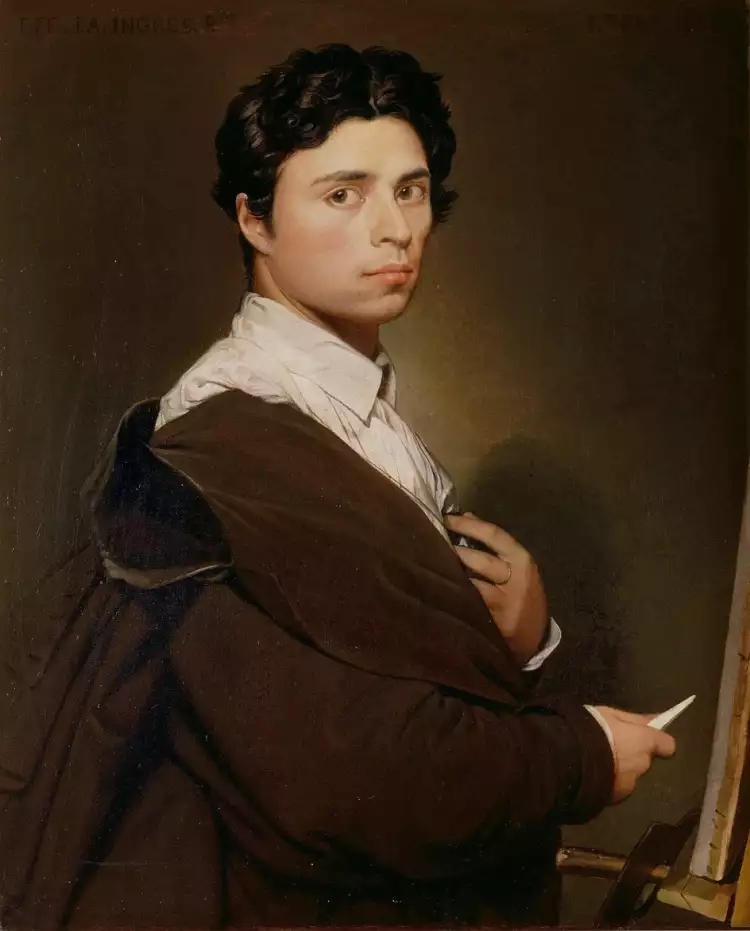 French classicism. Jean Auguste Dominique Ingres. Self-portrait, 1804
French classicism. Jean Auguste Dominique Ingres. Self-portrait, 1804
By the 1830s, classicism was losing ground, yielding to the pressure of romanticism. However, an outstanding master, Jean Auguste Dominique Ingres, joined the ranks of classicists. He studied under David and later, when he gained fame, he headed the Academies of Arts in Paris and Rome. Ingres believed that painting had reached its peak during the time of Raphael, and subsequently developed in the wrong direction. He considered his mission to return to the heights of the Renaissance era and continue to perfect his art in the same traditions. The artist created numerous epic works based on mythological, literary, and biblical subjects.
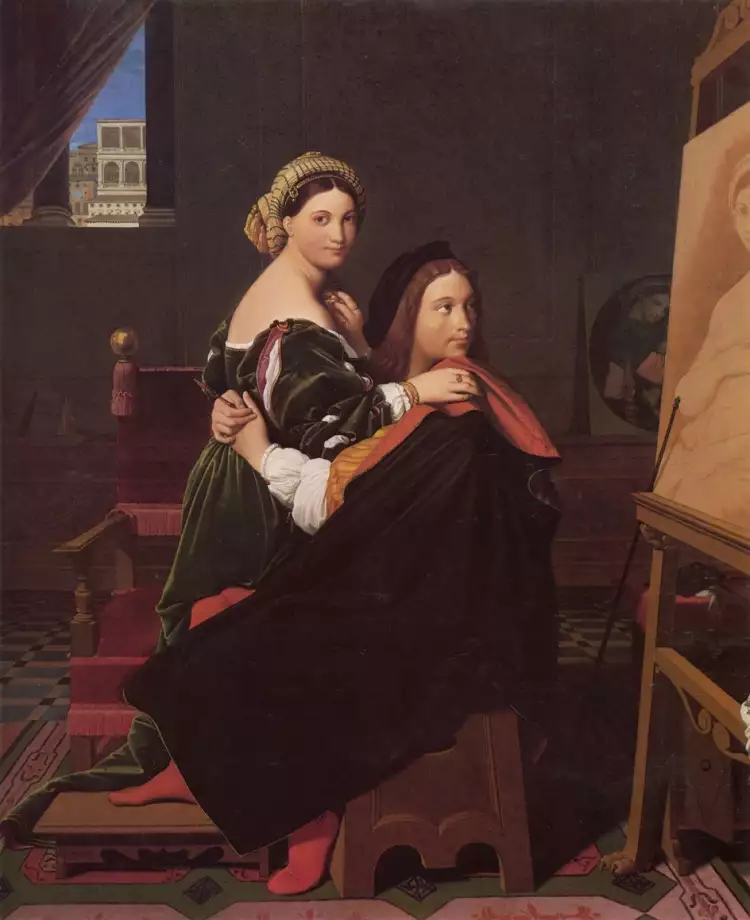 French classicism. Jean Auguste Dominique Ingres. Rafael and Fornarina, 1814
French classicism. Jean Auguste Dominique Ingres. Rafael and Fornarina, 1814
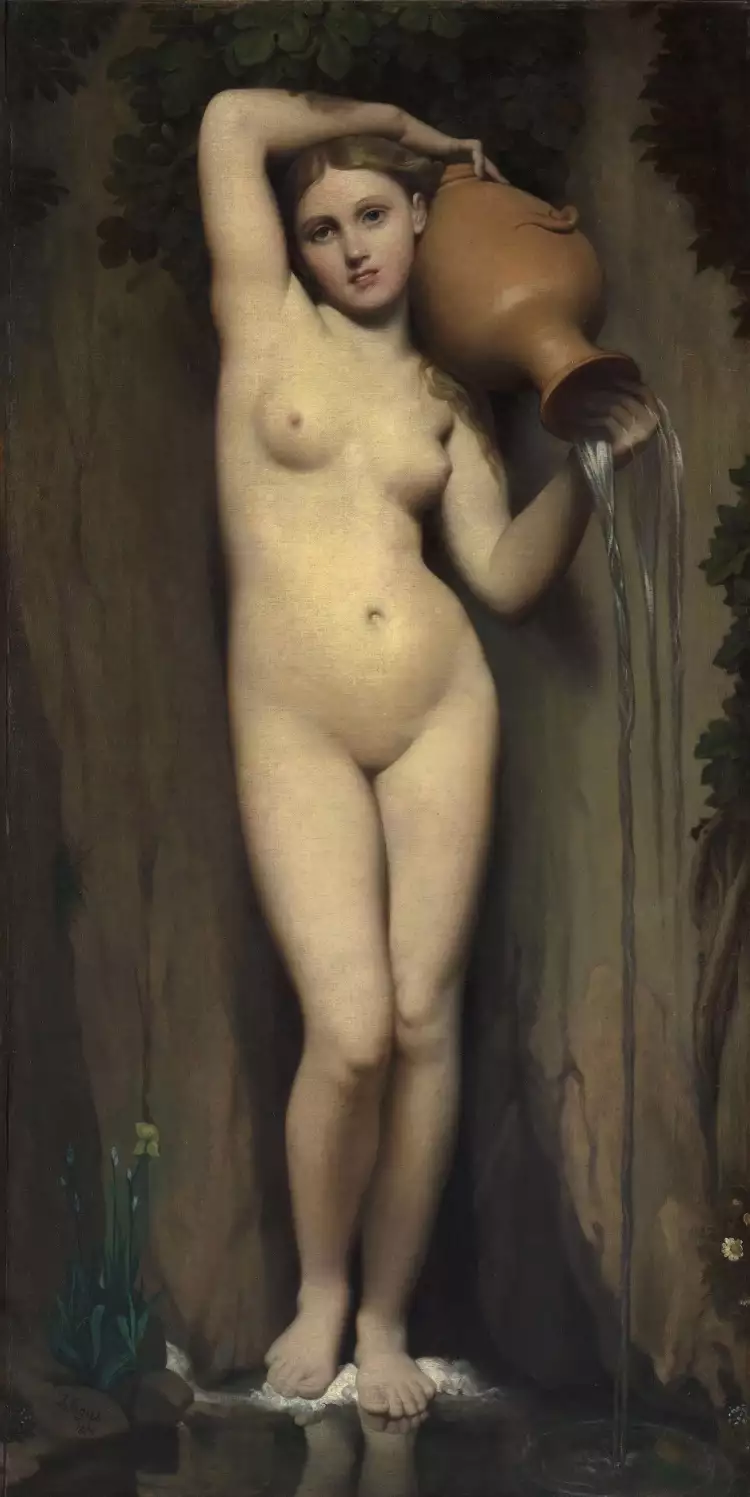 French classicism. Jean Auguste Dominique Ingres. The Source, 1856
French classicism. Jean Auguste Dominique Ingres. The Source, 1856
During Ingres's time, classicism began to decline. It was accused of artificiality and conservatism, as young artists preferred to explore new methods. Nevertheless, in its time, this movement was cutting-edge. The best works of classicists continue to impress audiences with the grandeur of their subjects and technical mastery.
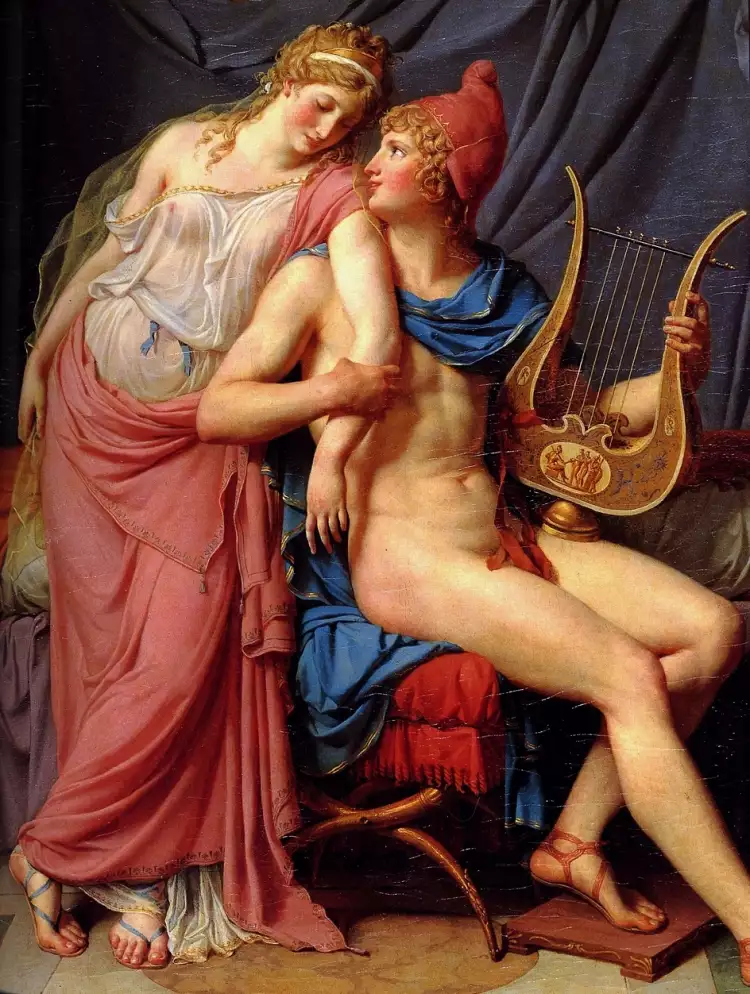 French classicism. Jacques-Louis David. The Loves of Paris and Helen, 1788
French classicism. Jacques-Louis David. The Loves of Paris and Helen, 1788
The paintings of French classicists can be a gem in a private collection and a sound investment. You can purchase a classic work of art or an antique masterpiece inexpensively at art auctions on the Very Important Lot platform. The internet portal also provides a convenient opportunity to acquire works from contemporary artists directly from the authors.
 Bold Rebranding: A 2024 Design Trend Shaping Brand Identities
Bold Rebranding: A 2024 Design Trend Shaping Brand Identities 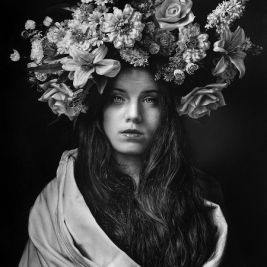 Hyperrealism - the perfect authenticity of artistic illusion
Hyperrealism - the perfect authenticity of artistic illusion 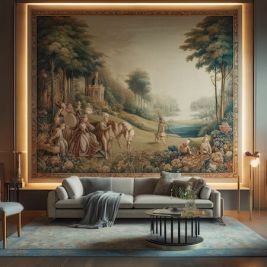 The Renaissance of Historic Tapestries
The Renaissance of Historic Tapestries 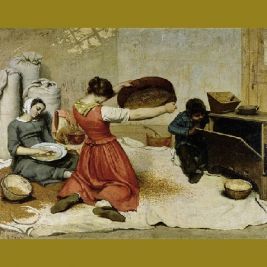 Realism - the art of portraying life in all its manifestations truthfully
Realism - the art of portraying life in all its manifestations truthfully 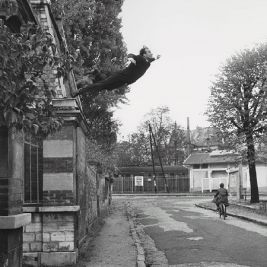 Performance art - provocative art with profound meaning
Performance art - provocative art with profound meaning 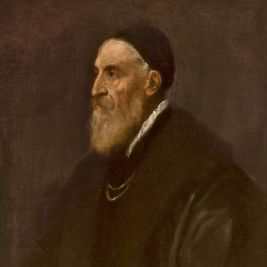 Titian Vecellio was the greatest Venetian genius of the Renaissance era
Titian Vecellio was the greatest Venetian genius of the Renaissance era 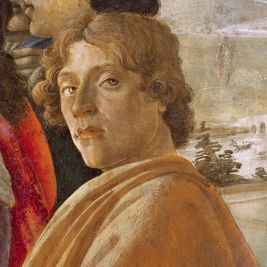 Sandro Botticelli: Biography, Artistic Career, and the Best Paintings of the Artist
Sandro Botticelli: Biography, Artistic Career, and the Best Paintings of the Artist  Birmingham silver - the beauty and elegance of small forms
Birmingham silver - the beauty and elegance of small forms 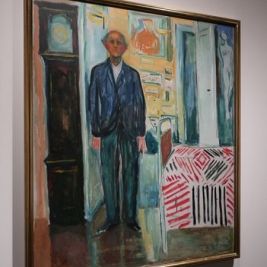 The most famous expressionist artists
The most famous expressionist artists 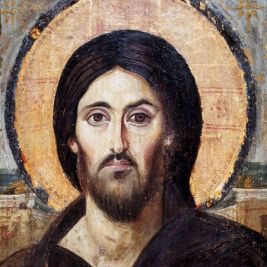 Icon - a sacred object in Christian culture: types, distinctive features, history
Icon - a sacred object in Christian culture: types, distinctive features, history